PRESTO PLANS
Sent straight to your inbox
CLICK HERE TO ACCESS
Sign up to receive 10 ready-to-use ELA resources your students will love!
10 FREE ELA RESOURCES
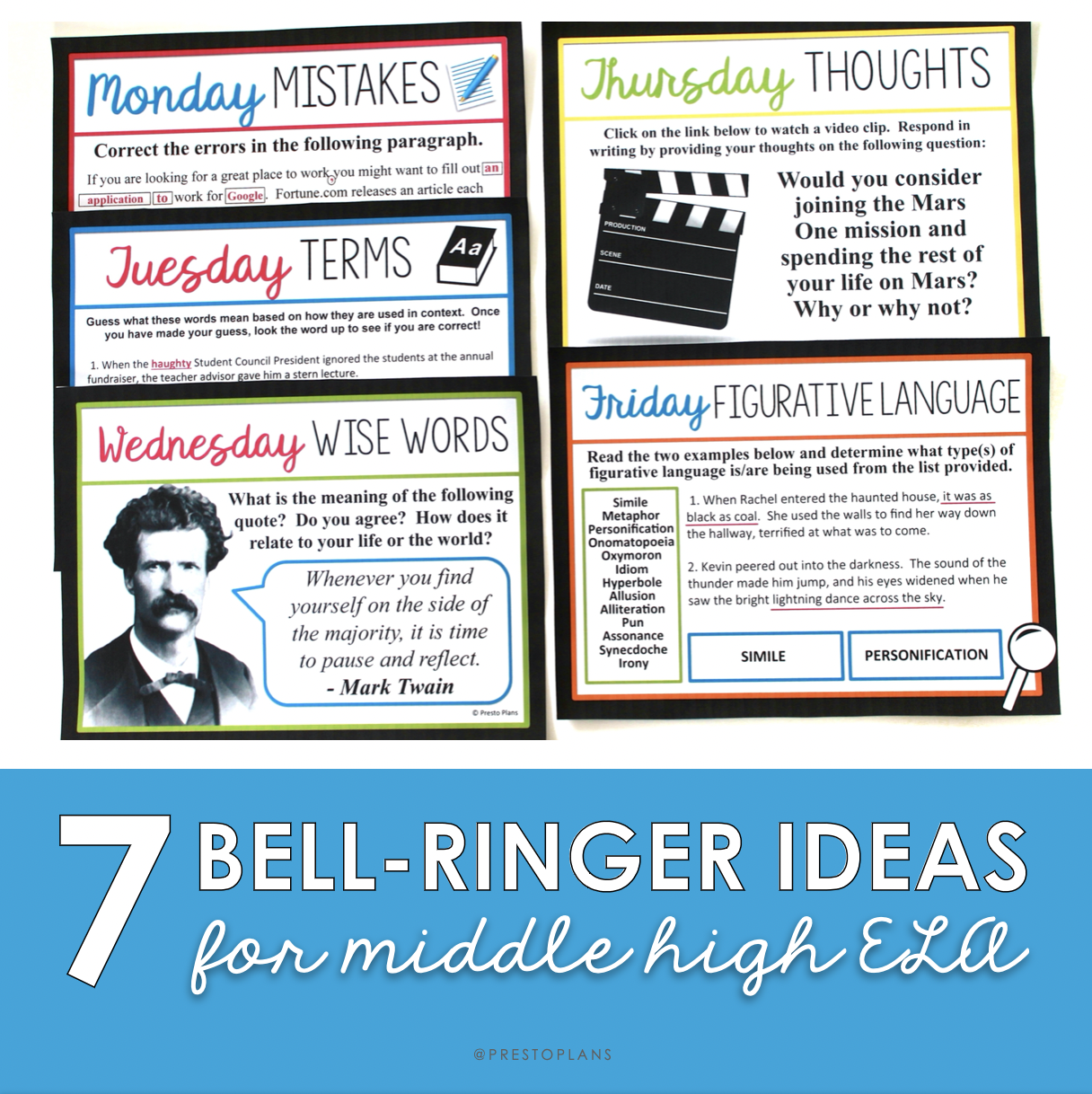
7 Bell Ringer Ideas For Middle & High School English
If I had to pick one English teaching resource I could not live without, I would 100% choose bell-ringers! Bell-ringers are a great way to set the tone and calm the class chaos as soon as the bell rings. They are a reliable and engaging way to develop students’ ELA skills, and they can buy English teachers an extra 5-10 minutes at the beginning of each class. Bell-ringers provide a reliable and consistent structure to your daily routine. Below are my 7 favorite ways to implement them in the ELA classroom.
Click here to get 4 FREE weeks of bell-ringers.
1. VIDEO JOURNALS
The idea of using videos as bell-ringers came after an interaction with a student in my grade 10 English class. The student sauntered into class at the bell, took a couple of bites out of his chocolate bar, and threw the rest in the trash. Obviously, I was horrified. Who throws out perfectly good chocolate?! I asked him if there was something wrong with the chocolate bar, and he said that he was just full…
This reminded me of a video I had seen about cacao bean farmers from Ivory Coast who had never tasted chocolate. I decided to scrap the start of my lesson plan in favor of this “teachable moment.” Don’t you love when that happens? I brought the video up on the screen and the class, who usually took a while to settle down, were immediately engaged. Then, I asked students to respond to the video in writing for 10 minutes. The class was silent, and everyone was writing. The discussion we had after watching was also engaging and meaningful. It was a lightbulb moment!
Benefits of Video Journals
After this, I started using video journals once a week as a writing prompt. Not only do my students love them, but it helps with classroom management and has been an excellent tool for engaging reluctant writers. Students have even sent me links to videos that they thought would make a good video journal. In the last couple of years, I have collected 125 videos (check them out: Volume 1, Volume 2, Volume 3).
Another added benefit is that you have student writing samples to refer back to with different lessons. If you are working on organization, word choice, grammar, etc. students have a chance to look at their own writing to make improvements.
As an English teacher, I have a bit more flexibility in the content of the videos, but I think with some video searching, this could also be a great way to start a science, history, or even a math class once a week.
2. DISCUSSION AND DEBATE
In my experience, middle and high school teachers often start class with instruction (usually in lecture format). To change things up, I like to start one class per week with students in groups for discussion for 5-10 minutes. To avoid the stress of forming groups weekly, I have them keep the same group for 4 weeks, then we switch. I try to choose topics that spark a lot of debate or discussion (Check out these Ethical Dilemma Prompts or “What if?” prompts).
- Be respectful
- “We are done” is not acceptable. Keep talking!
- Everyone must speak at least once.
3. INTRODUCE LITERARY TERMS
On Monday, I like to introduce a literary term of the week. When possible, I give students examples of how this literary term is used in TV, movies, music, novels, etc. This engages students and makes the content more relevant!
I also have a bulletin board dedicated to these terms, and I try to choose words that relate to what we will be studying that week. For example, if I were teaching “The Lottery” by Shirley Jackson, I might choose Foreshadowing, or if we are reading “My Last Duchess” by Robert Browning, I might use Dramatic Monologue. This way, I can refer to the terms in the context of what we are learning. I also have students bring in their own examples of the terms they find to add to the bulletin board.
4. INTRODUCE NEW VOCABULARY
Help students develop their vocabulary by introducing new terms at the start of each week. Along with my literary term bulletin board, I also have a board dedicated to the word of the week. I usually provide an example of a vocabulary word in a paragraph and have students determine the meaning of the word in context. Then, they write their own example of the word in a sentence on a post-it and add it to the bulletin board! You can also encourage students to use the word that week. If you want this to actually happen, candy is a great motivator!
5. REAL-WORLD GRAMMAR
Let’s be honest, grammar is not the most exciting topic for middle and high school students. I try to fit in grammar instruction as a bell-ringer by getting students to spend the first few minutes in class finding errors in social media (Twitter, Facebook, Instagram, Pinterest, etc). It’s amazing how much more engaged students are in finding errors when they are in a relevant context.
Although I didn’t intend these bell-ringers to be competitive, students usually want to be the first to find all the errors. I must say that, as an English teacher, it is quite satisfying to see students get so excited about punctuation. They also love Editing Celebrity Social Media, as shown below.
6. QUOTES
Quite a while ago, I decided to use my favorite quotes to make classroom posters to brighten up the room. In an attempt to make students actually read the quote posters, I started having them respond to them in journal format at the start of class. Although I’ll admit that the video journals are usually a bigger hit, the responses to these are usually more mature and thought-provoking. Here are some of the prompting questions I use:
- “What does the quote mean?”
- “Do you agree with the quote?”
- “Does this quote still hold relevance today?”
7. FIGURATIVE LANGUAGE
Whenever I teach figurative language (metaphor, simile, alliteration, oxymoron, personification, hyperbole, etc.), I feel like my students understand the terms. Then, when we are reading a text, they seem to have trouble with finding examples, and they forget all the definitions…
To help my students practice this skill, I spent many hours writing paragraphs that contained lots of figurative language. Although it felt like a never-ending task, it was so worth it. You can start a class a week by getting students to read a paragraph and find the figurative language used. It only takes a few minutes, but after a few weeks, they will become professional figurative language finders. Then, as time goes on, instead of focussing on what figurative language is used in stories you read in class, students can use higher-order thinking to evaluate the figurative language used, which is much more valuable!
I hope you found this useful! If you’d like a year of English bell-ringers ready for you, you can choose between these 4 volumes: Volume 1 , Volume 2 , Volume 3, and, Volume 4.
You can also check out my answers to the 10 most asked questions about English bell-ringers.
Search the blog for what you are teaching
GIVEAWAYS
sent straight to your inbox!
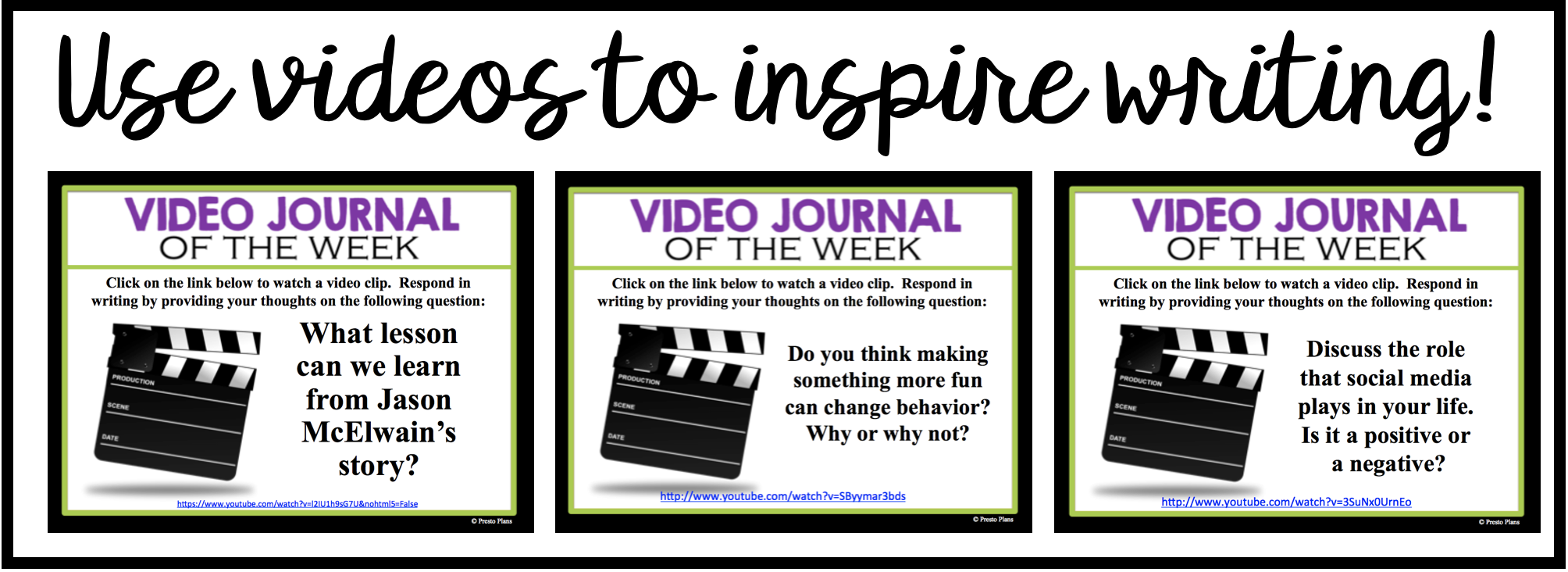

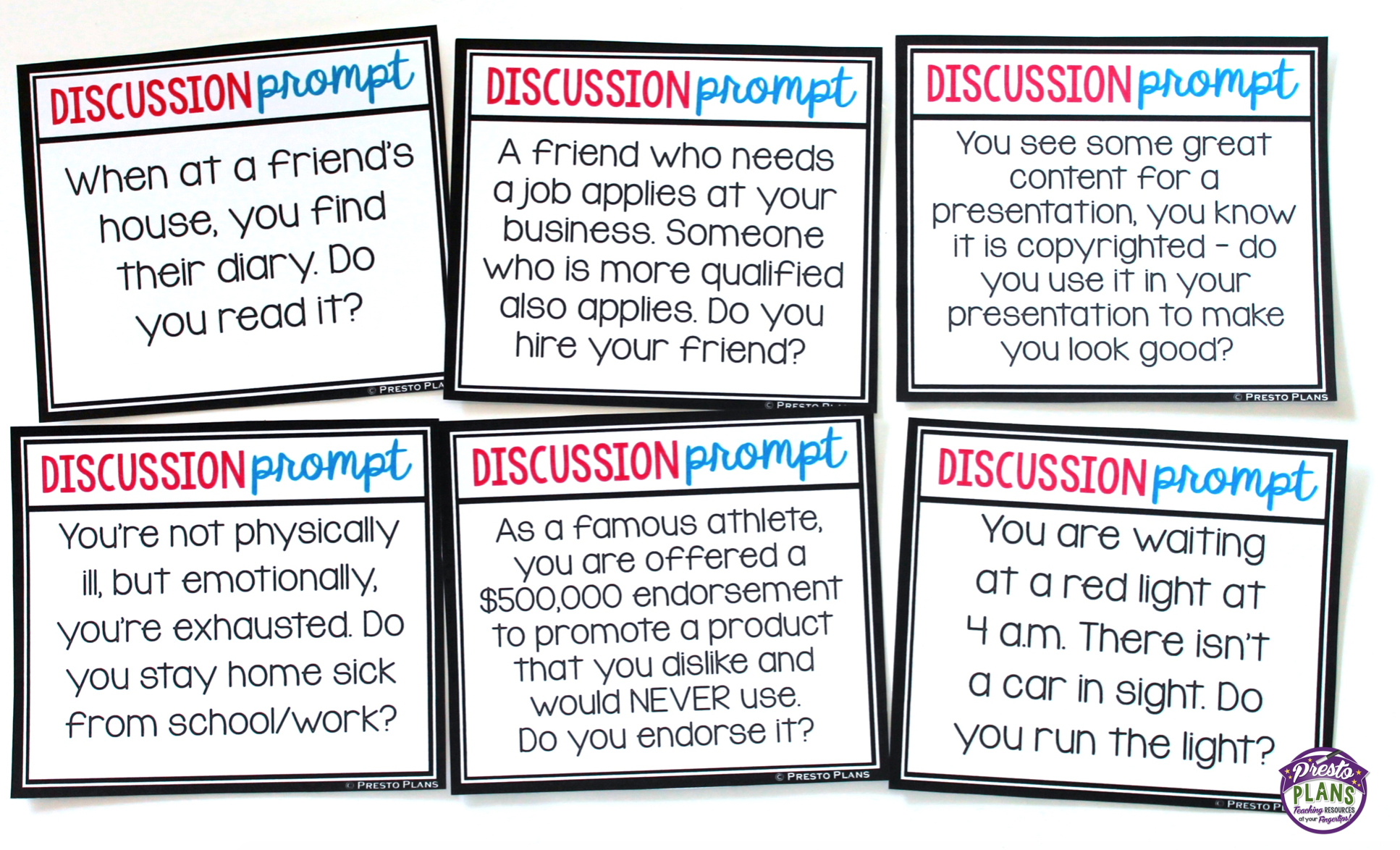
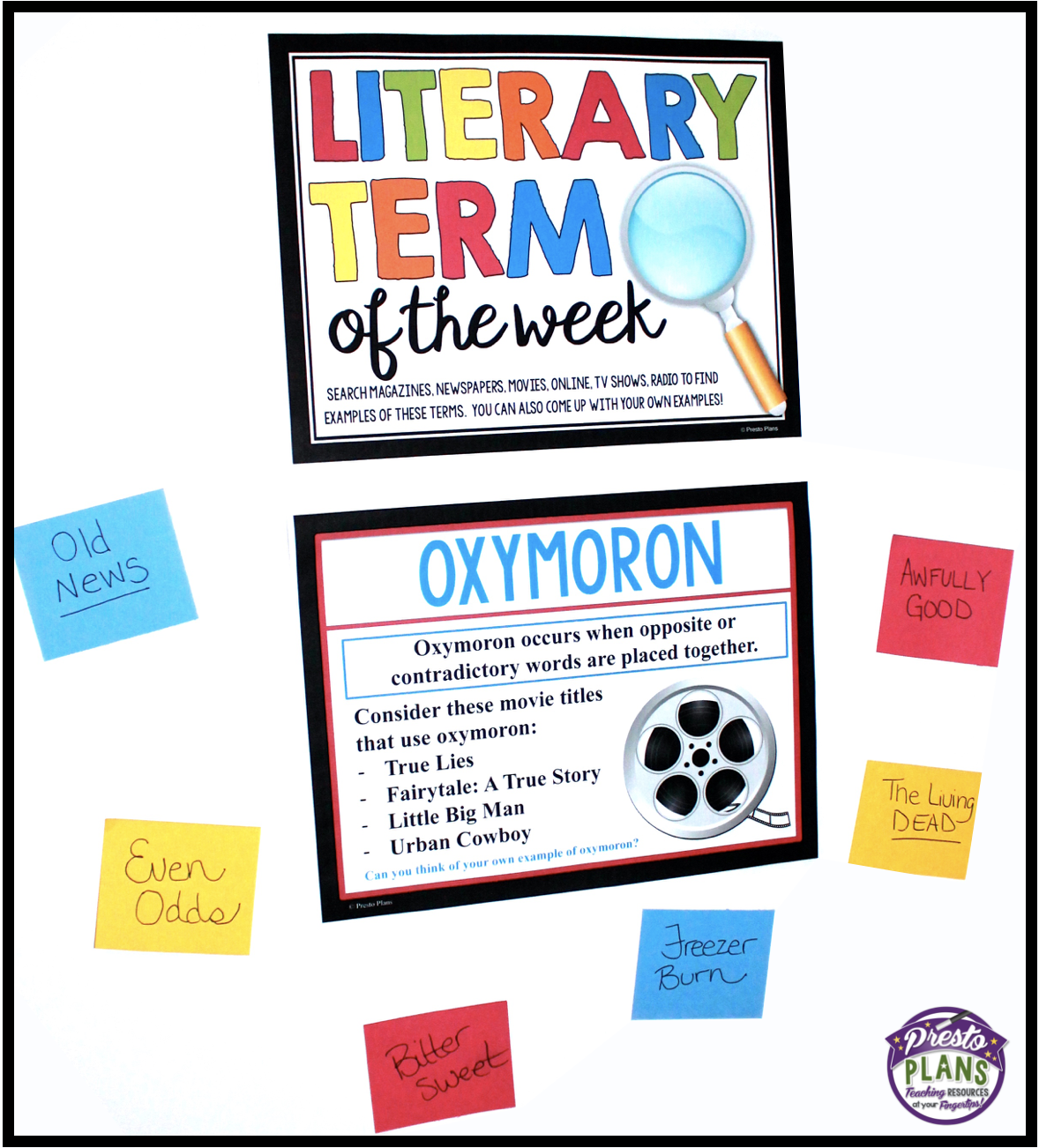
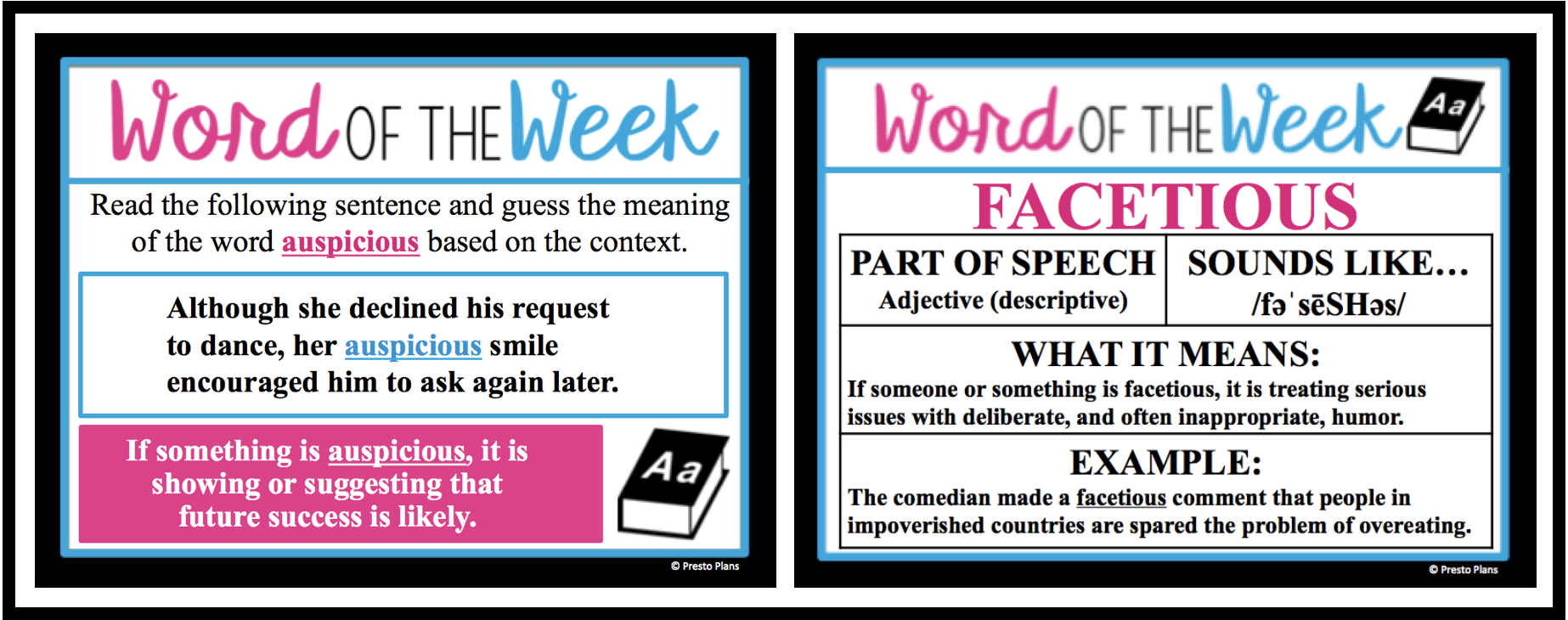
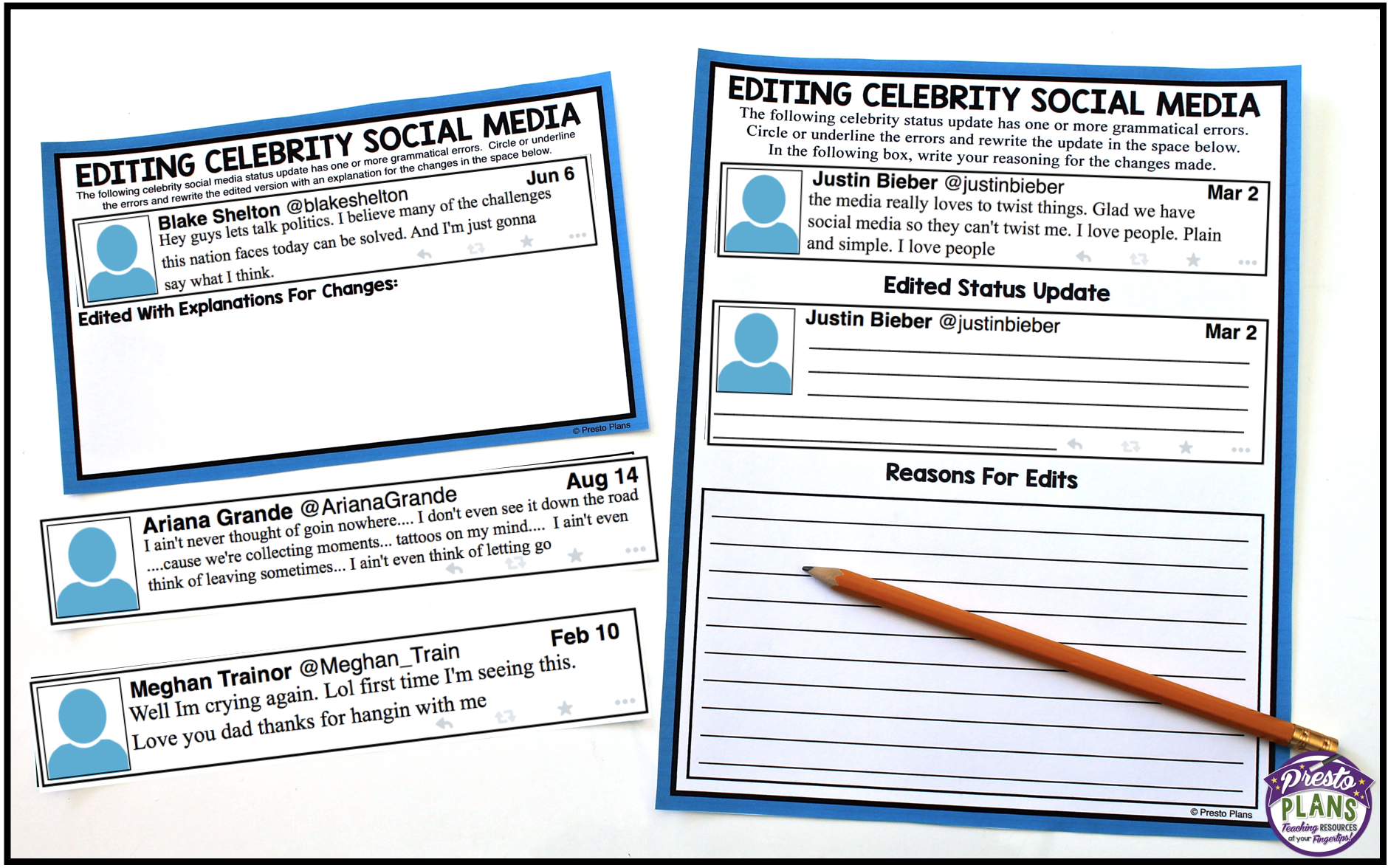

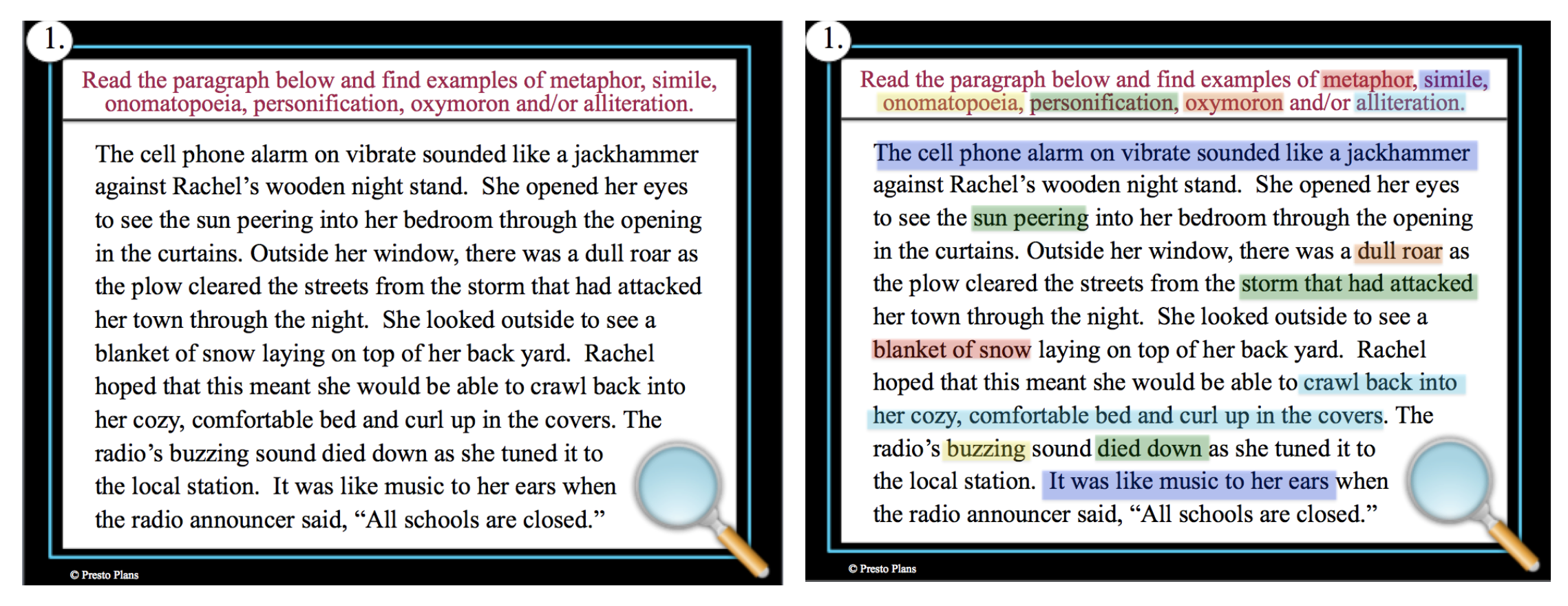
share this post